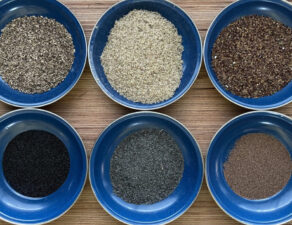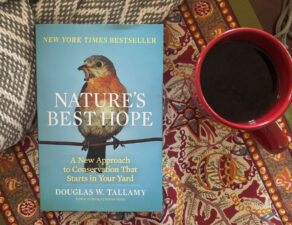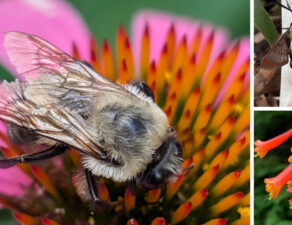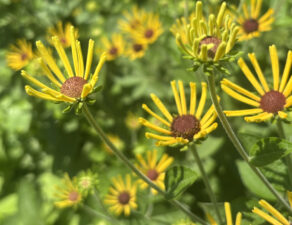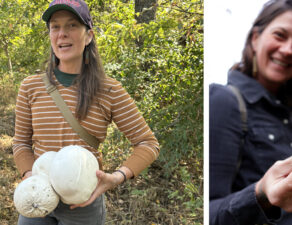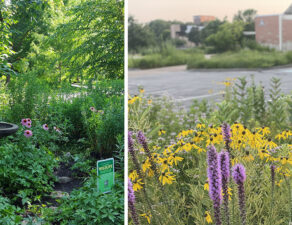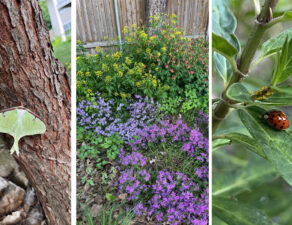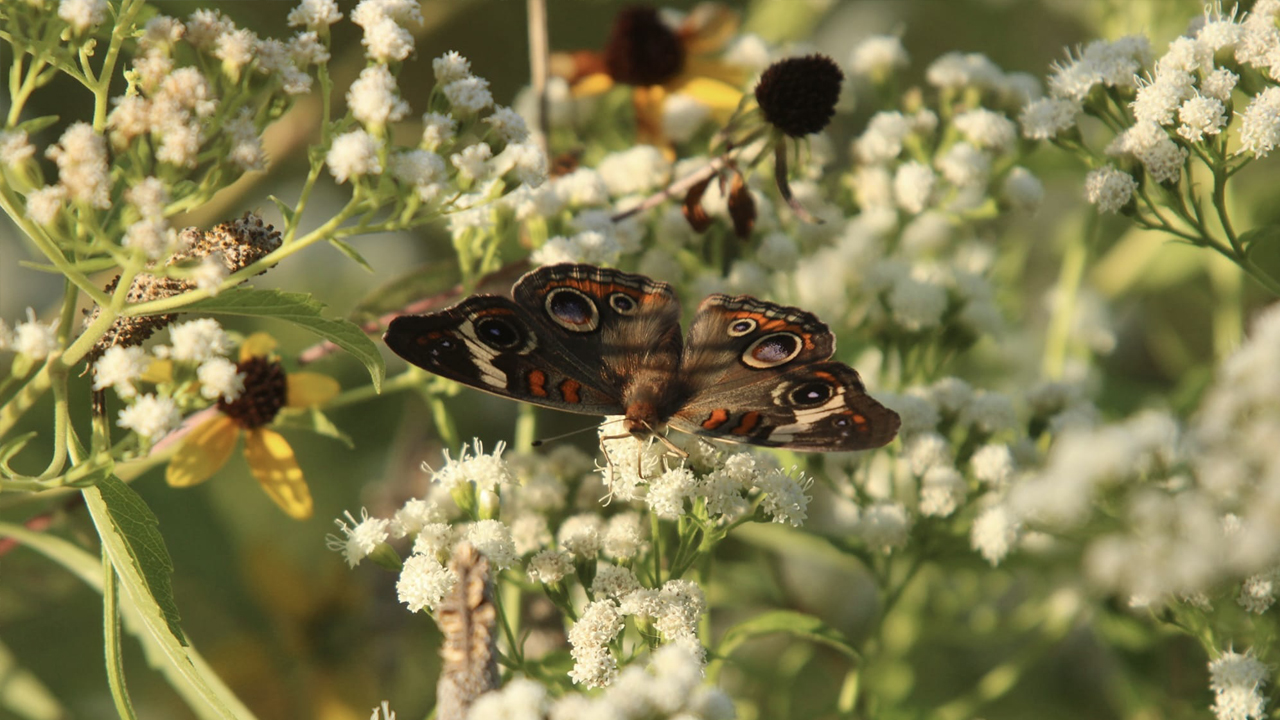
Photo (above): Kurt Hoeper
By Grace Suh
Please read to the bottom for more information on attending the July tour.
July’s tour differs from previous months in time and location:
Weather: Hot & Humid
Date: Saturday, July 13th
Time: 8:00-11:00AM (note the earlier start, for cooler weather)
Location: Around the I-435 loop
July is peak prairie, and the July 13th tour offers three prairie and prairie-type gardens. These are three very different gardens: they vary in size from eight acres to one side of a typical quarter-acre subdivision backyard, and in age from two years old to 12.
What they have in common are prairie plants that thrive in deep soil and full sun. There are the world-famous flowers most emblematic of the Midwest, such as Sunflowers, and many special and more unusual species, like Green Milkweed and Prairie Paintbrush.
All three gardens vividly prove the principle: If you plant it, they will come.
FIELD OF DREAMS (location: by MCI Airport)

Photos: Kurt Hoeper
Many of us come to native plants via conventional gardening. We fall in love with Virginia Bluebells, or replace the Hostas with Wild Ginger. But Kurt is as close to a pure proof of concept as can be imagined, someone who applied theory to a blank slate, and went from zero to hero, in two short years.
We all know a guy who can read a manual and build a log cabin. With native habitats, that guy is Kurt. When he moved into this house in December 2021, the backyard was empty save for an Oak tree and a concrete basketball pad. In 2022, Kurt read Doug Tallamy. He saw what needed to be done, and he got to it.
Following instructions on the Missouri Prairie Foundation and Missouri Wildflowers Nursery websites, Kurt solarized the back of his acre lot. That winter he sowed the prepared area with one pound of deep soil prairie seed mix, for a cost of less than $100. Less than a year later—boom. There was prairie. As well as nesting bluebirds, wild turkeys, and butterflies of many kinds.
Kurt was hooked. Following still more instructions, he dug out a pond behind the house and planted savanna plants between the pond and the prairie. The pond in particular has brought so much life — his wildlife cameras capture turtles, frogs, and many kinds of visiting birds.
Most recently Kurt has planted a hedgerow of Missouri Department of Conservation berry and fruit saplings along the side property line for the birds. When you visit this garden, behind an unassuming house on an anonymous cul-de-sac, take time to imagine how many birds your yard can be supporting, just two years from now.
HOA HABITAT (location: north of Liberty)
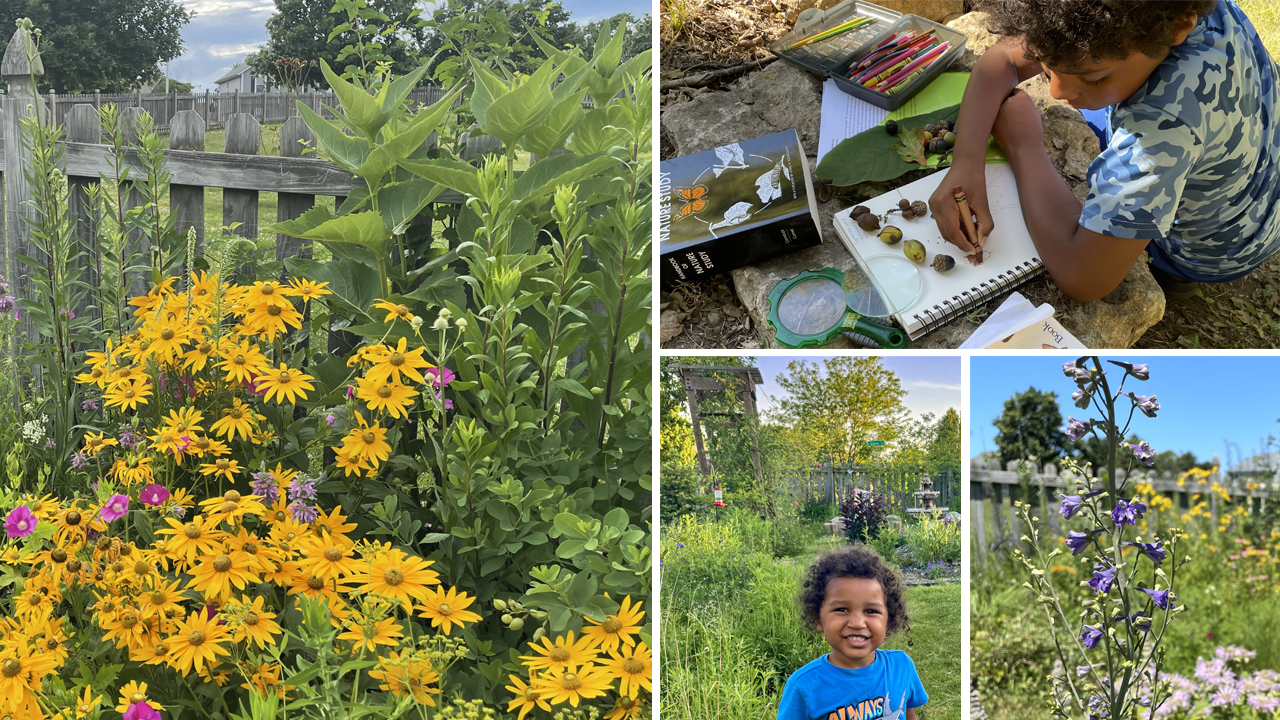
Photos: Erin Watson
For everyone who says, “Yes, but I don’t have an acre,” this one is for you. Erin lives in a pleasant and typical newish subdivision: Quarter-acre lots, curling cul-de-sacs, small and few trees.
Four years ago, during the shutdown, Erin was pregnant with her fifth child while home-schooling her older four children. So she did what anyone would do in similar circumstances: she began a garden.
“I went crazy,” she said, planting fifty native species at a time. But with an eye to neighbors, she also planted recognizable, crowd-pleasing flowers like Coral Honeysuckle nearest to the back fence and installed raised beds and pathways. With the family now expanded to six children, Erin’s garden is left to fend for itself. But thanks to those structural elements, it maintains an appearance of order that keeps the HOA happy.
In fact, in its fourth year, Erin’s garden has come into its own, flourishing under the plentiful subdivision sun. New blooms and surprises continually delight the children — a robin’s nest in the Coral Honeysuckle, hummingbirds on the Red Buckeye, and the Buttonbush blooming for the first time this year. The children frequently sit in the garden for nature studies, to watch a Primrose open or identify butterflies. Three-year-old Elijah is alert to bird calls and recognizes birds by their song. Erin’s garden is a wonderful example of the small but mighty. Grown by a mother with many demands on her time and energy, it rewards the entire family with abundant beauty and wildlife support.
PRIME PRAIRIE (location: north of Louisburg)
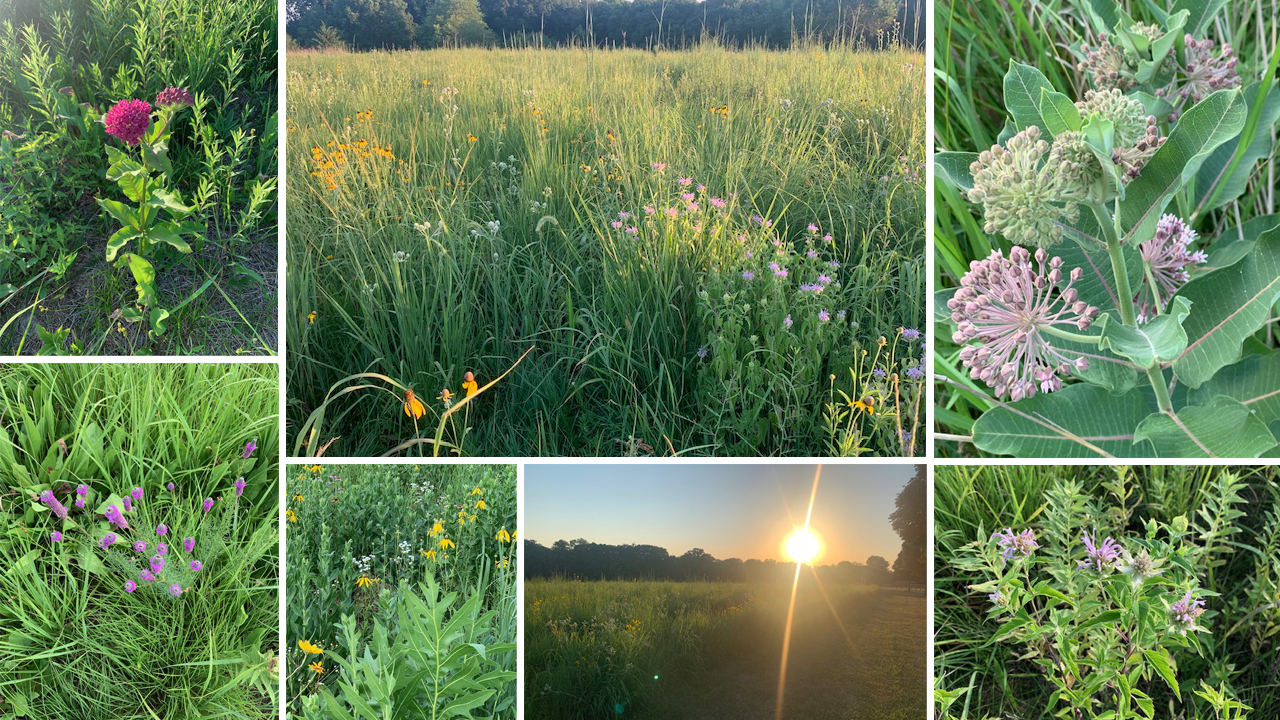
Photos: Tim Rodgers
Four words: Eight acres, prime prairie.
Tim and Susan moved to this acreage twelve years ago. Susan had long wanted more space than was available around their Overland Park home, and over the years proposed one possibility after another. But it wasn’t until Tim saw this spot, with its woods backing onto a winding creek, that he was willing to make the move.
Interestingly, Tim’s father made a similar move from city to country, when Tim was a young boy. Thus, many of the cycles and work that came with the land, the brush clearing and pond management and wood chopping, as well as appreciation of the rhythms of nature, were familiar to him.
He had long admired a friend’s reconstructed prairie, and realized he could do the same in the large sunny area along the long drive. A custom mix of native grasses and prairie flowers was seeded in 2014, so this prairie is now ten years old, mature and rich. Many plants are extremely deep-rooted and long-lived, including Compass Plant, which roots down twenty feet and can live a hundred years.
To experience this prairie, bring a camp chair, find a spot, close your eyes. You’ll be reminded of the sound of deep midsummer; a sound rarely heard any longer in our increasingly sterile world—the thrum and roar of millions of insects.
These three gardens are part of our July 13th Habitat Garden Tour.
PLEASE READ:
- Locations: Around the I-435 loop. Unlike our four June gardens, which were within two miles of each other, it is 65 miles between these three locations. While it is theoretically possible to visit all three, it will likely be more enjoyable (and safer) to take it easy and visit any one or two. Carpooling is encouraged!
- Weather: July = hot + humid. The gardens open an hour earlier, at 8:00AM, so take advantage of the cooler morning hours if possible. Be prepared: pack cold beverages, cooling towels, hats, sunglasses, sunblock. Camp chairs and parasols are welcome. Please do not push yourself. Watch for heat stroke and sunburn. Enjoy these gardens responsibly.
- Facilities: Restrooms are not available at the gardens, so map your route ahead of time and make note of gas stations and grocery stores (good places to restock ice and beverages too).
HOW TO SIGN UP
If you’re not already a subscriber, we’d love to have you join us. SIGN UP FOR JULY or SUBSCRIBE TO THE SEASON by making a donation of any amount, according to your means.
WHERE TO GO
The Thursday before each Second Saturday (July 11th), registrants and season subscribers receive an email with garden addresses. Click on the button to download the PDF of in-depth descriptions and key plants.
If you have not been seeing the emails, please note:
- The emails are sent from: Grace@deeprootskc.org
- The subject line will be: IMPORTANT 🌸 July Habitat Gardens 🦋 ADDRESSES & INFO
- If your Inbox has been filtering these emails, please add this address to your contacts so the email does not go to a junk or spam folder.
- If you do not see the email on July 11th, please email Grace@deeprootskc.org ASAP, as it is not possible to respond to phone calls and emails on the day of the tour.
See you in the garden!
WHAT IS A HABITAT GARDEN?
Habitat Gardens are gardens of native plants that provide habitat for birds, bees, butterflies and other wildlife.
Every Second Saturday, from April to October, Habitat Garden Tour invites you to three (or more) residential habitat gardens to:
- Experience diverse habitat gardens and the succession of seasonal blooms that support wildlife.
- Meet other gardeners, native plant enthusiasts and wildlife supporters.
- Find inspiration and information to grow your own habitat garden.
